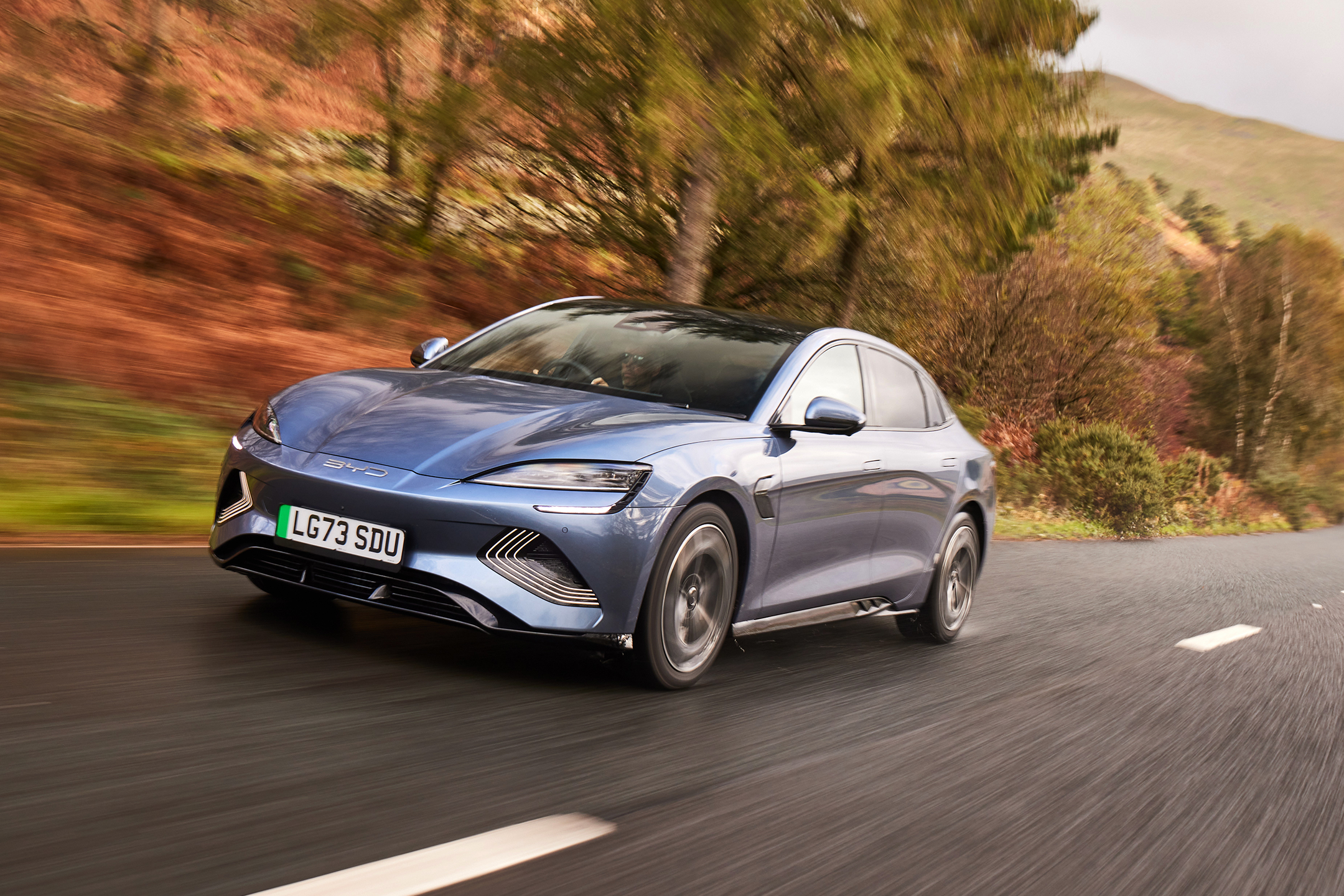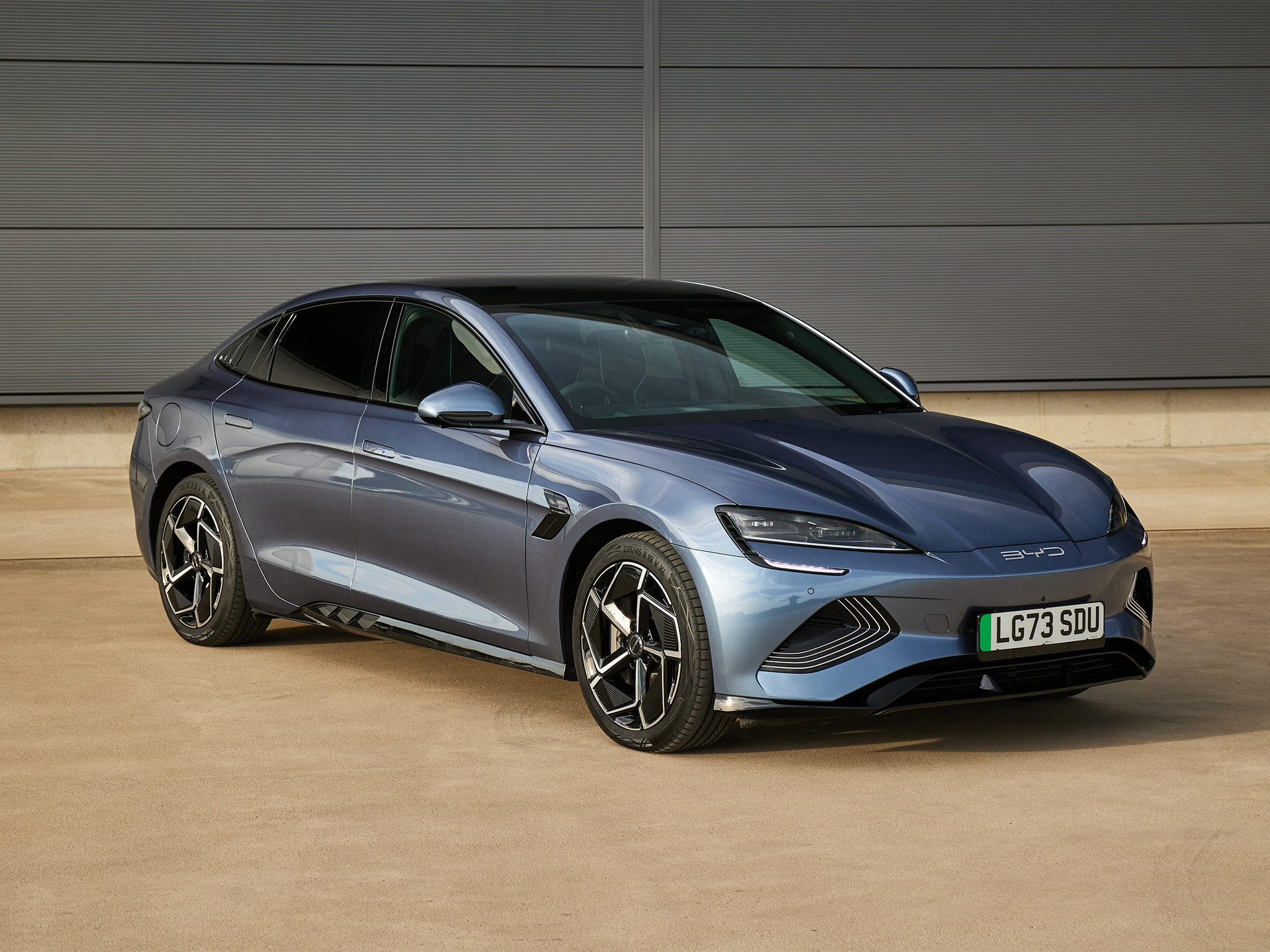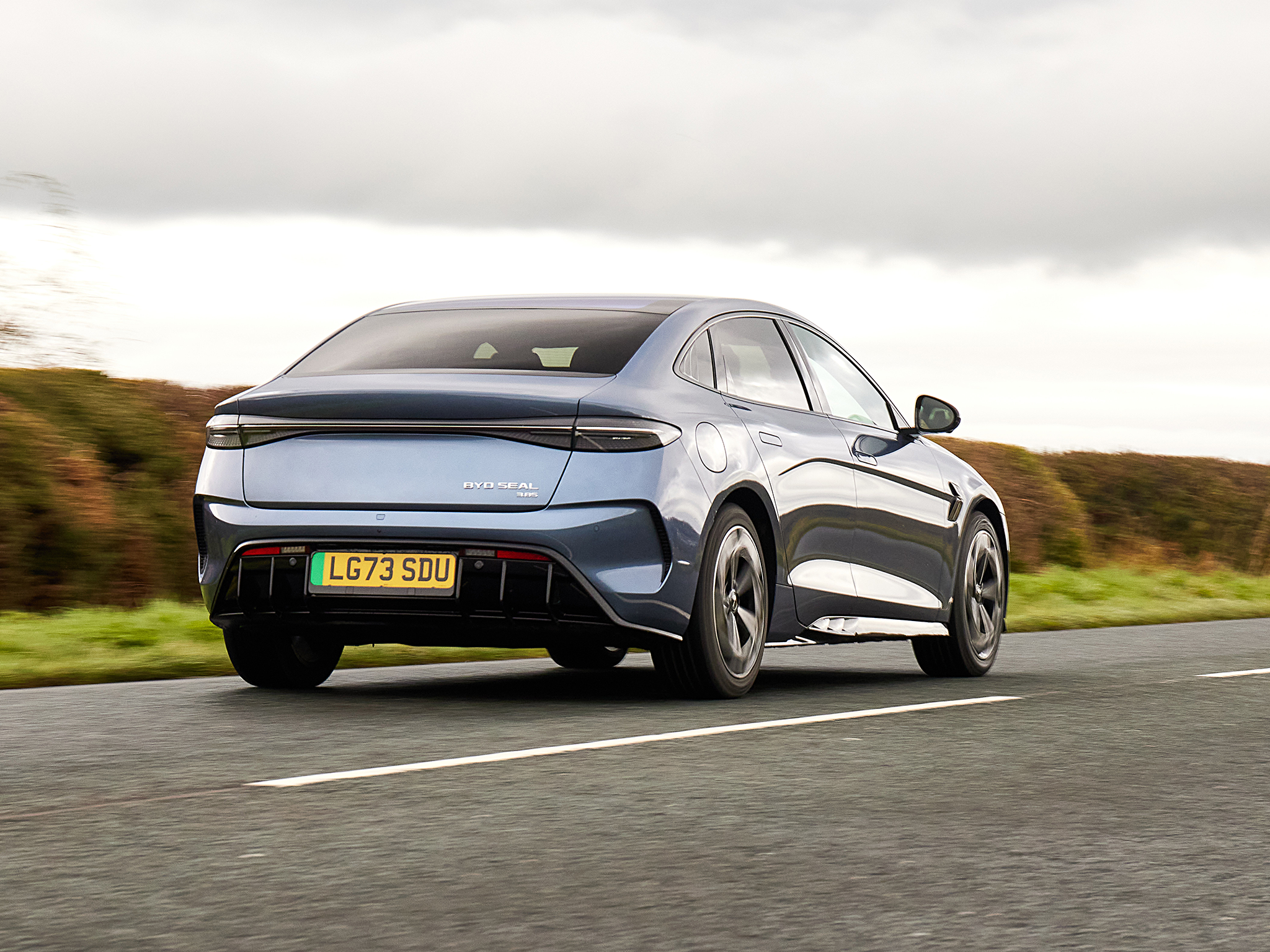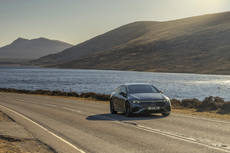BYD Seal review: Stylish and comfortable mid-market EV saloon
The BYD Seal is a smart, comfortable and stylish saloon with good range and efficiency, but the infotainment system can be frustrating and rear seat space is limited

Unfazed by stiff competition from Tesla, Hyundai, VW and more, the BYD Seal is a solid attempt at a mid-market electric saloon with good range, performance and efficiency. It comes fully-loaded with heated, ventilated and electrically-adjusted seats, plus Apple CarPlay, a 12-speaker stereo and wireless phone charging all as standard.
Unlocking the extra performance of the dual-motor variant only costs an extra £3,000 – and gets you a 0-62 mph time of 3.8 seconds – but we recommend you stick with the standard car, which is plenty quick enough and goes further. The Seal is a comfortable cruiser with a pleasant interior, but rear seat space is slightly limited and the interface of BYD’s infotainment system can be frustrating. It feels like a more conventional car than the futuristic Tesla Model 3, and for some drivers we suspect that will be reason enough to buy one.
How we tested
I spent an afternoon driving the BYD Seal around Hampshire. The driving route included town centre streets, as well as rural lanes, country A roads and dual-carriageway.
BYD Seal: From £45,495, BYD.com

Independent rating: 7/10
- Pros: Up-market styling, good range and efficiency, fully-loaded as standard
- Cons: Pricier than some rivals, infotainment can be fiddly, quicker model isn’t worth it
- Price range: £45,495 to £48,695
- Battery size: 82.5 kWh
- Maximum claimed range: 354 miles
- Miles per kWh: 4.5
- Maximum charging rate: 150 kW
Battery, range, charging, performance and drive
Both variants of BYD Seal are fitted with an 82.5 kWh battery. The cheaper Seal Design has a single motor sending 305 bhp to the rear wheels and accelerates to 62 mph in 5.9 seconds; it has a maximum claimed range of 354 miles.
The Seal Excellence AWD costs an extra £3,000 and has two motors, all-wheel-drive, a total output of 517 bhp and a 0-62 mph time of 3.8 seconds – a stat BYD is so proud of, it appears as a badge on the back of the car. The quicker Seal has a claimed rage of 323 miles. Both models charge at up to 150 kW and can fill their batteries from 10 to 80 percent in as little as 37 minutes from a high-speed public charger.
Although the extra performance of the AWD might be tempting, we recommend the basic Seal, since it is plenty quick enough and has more range, while also being cheaper.
Interior, practicality and boot space
Like other BYD cars, it’s the interior where things get interesting. The Seal’s cabin isn’t quite as characterful as that of the Dolphin or Atto 3, but it’s still distinctive, with a minimal, stylish aesthetic that gives the car a quality feel.
We like BYD’s mix of touch and tactile controls, with a large infotainment screen sharing the cabin with physical buttons on the steering wheel and centre console. The climate controls are on the touchscreen though, and can be a bit fiddly until you get used to them.
The seats are comfortable, visibility is good and the panoramic roof fills the interior with light. Space for rear seat passengers could be better but it’s not terrible back there, and the boot capacity is respectable 400 litres, albeit with a fairly small opening as is common among saloon cars. There’s an extra 53 litres under the bonnet of both models. Standard features include a heated leather steering wheel, electrically adjustable front seats that are both heated and ventilated, and ambient lighting.

Technology, stereo and infotainment
The Seal has a massive 15.6-inch touchscreen display that rotates at the press of a button. Why? It’s purely down to personal preference. The operating system is ok but the interface can feel cluttered and it’s not the most intuitive around. Thankfully the Seal comes with wired Apple CarPlay and Android Auto, plus there’s two wireless charging pads and USB-C sockets too.
Tech features also include a 10.25-inch driver display (an improvement over the smaller ones fitted to other BYDs), a 12-speaker sound system, onboard 4G connectivity, a head-up display projected onto the windscreen and a voice assistant summoned by saying “Hi, BYD”.
The system looks and feels a lot like a big Android tablet, and it comes with integrated Spotify support, navigation and DAB radio, but we reckon you’re more likely to p;lug your phone in and use Google or Apple Maps.
Prices and running costs
Like other BYDs, the Seal aims to impress by delivering great value. At £45,000 it’s there-or-thereabouts. It looks good, rides well and feels plush, with good performance too. However, the perennial thorn in BYD’s side is Tesla, whose Model 3 costs about £5,000 less and has access to the excellent Tesla Supercharger charging network.
The BYD Seal is arguably a more conventional car than the Model 3 – it uses conventional indicator and wiper stalks instead of infuriating buttons, for a start – but it’s hard to look past the value offered by Tesla. Running costs for the Seal can be very low, like with any EV, so long as you charge at home and avoid expensive public chargers whenever possible.

BYD Seal rivals
FAQs
How long does it take to charge?
Despite BYD’s history as a battery company with decades of experience, its cars charge no quicker than many others. The Seal manages a peak charge rate of 150 kW, which means a top-up from 10 to 80 percent can take as little as 37 minutes. Filling the battery using a wallbox charger at home takes around 8.5 hours.
How much does it cost - is it worth it?
BYD tends to pack its cars with kit as standard, and the Seal is no exception. Both versions come fully-loaded and, while £3,000 seems like good value for all the extra performance, we recommend sticking with the base model. It’s plenty quick enough, and goes a bit further too.
Does BYD replace batteries for free?
Like other BYD cars, the Seal’s battery comes with a warranty that lasts for eight years or 125,00 miles, whichever comes first. If the battery fails or its maximum capacity falls below 70 percent in that time, you shouldn’t have to pay for a repair or replacement.
The verdict: BYD Seal
Although new to the UK, BYD is China’s biggest EV maker. The Seal is its plushest car yet for our market, with good range and performance at a decent price, but its tech is frustrating.
Join our commenting forum
Join thought-provoking conversations, follow other Independent readers and see their replies
Comments





Bookmark popover
Removed from bookmarks